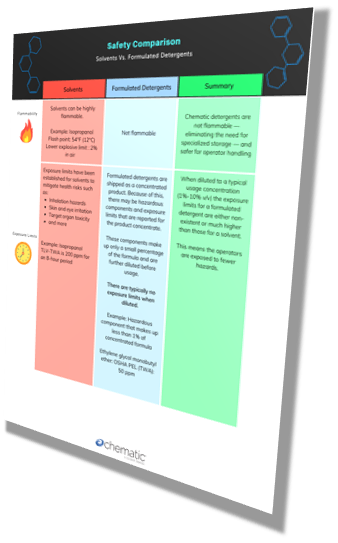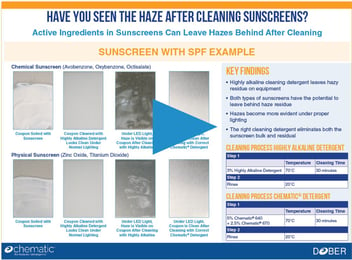Safety Comparison: Formulated Detergents vs. Solvents
What's the difference between a formulated detergent — like Dober's Chematic team offers — and a solvent?
In short, there are quite a few differences in exposure limits, flammability, and storage (among other considerations).
At the bottom of this post, you can fill out a form to download our handy infographic which outlines the safety differences between formulated detergents and solvents. 
Flammability
For example, solvents can be highly flammable, while formulated detergents are not.
Exposure Limits
Meanwhile, in other safety concerns, exposure limits differ significantly for formulated detergents and solvents.
For solvents, exposure limits are in place to mitigate health risks, like inhalation hazards, skin and eye irritation, target organ toxicity, and more.
Formulated detergents, meanwhile, typically don't have exposure limits when diluted.
Storage
Storage specifications also differ greatly between the two. Solvents must be stored in flammable cabinets with proper ventilation. Taking isopropanol as an example, storage must adhere to OSHA, NFPA, and IBC standards.
Formulated detergents, meanwhile, only need to be stored at room temperature and kept separate from concentrated acids.
Download Our Formulated Detergents vs. Solvents Guide
Luckily, Critical Cleaning Lab Manager Jessica Kask has put together all the differences between formulated detergents and solvents in one helpful infographic.
If you would like access to that infographic, fill out the form below to download it and keep it as a reference.



